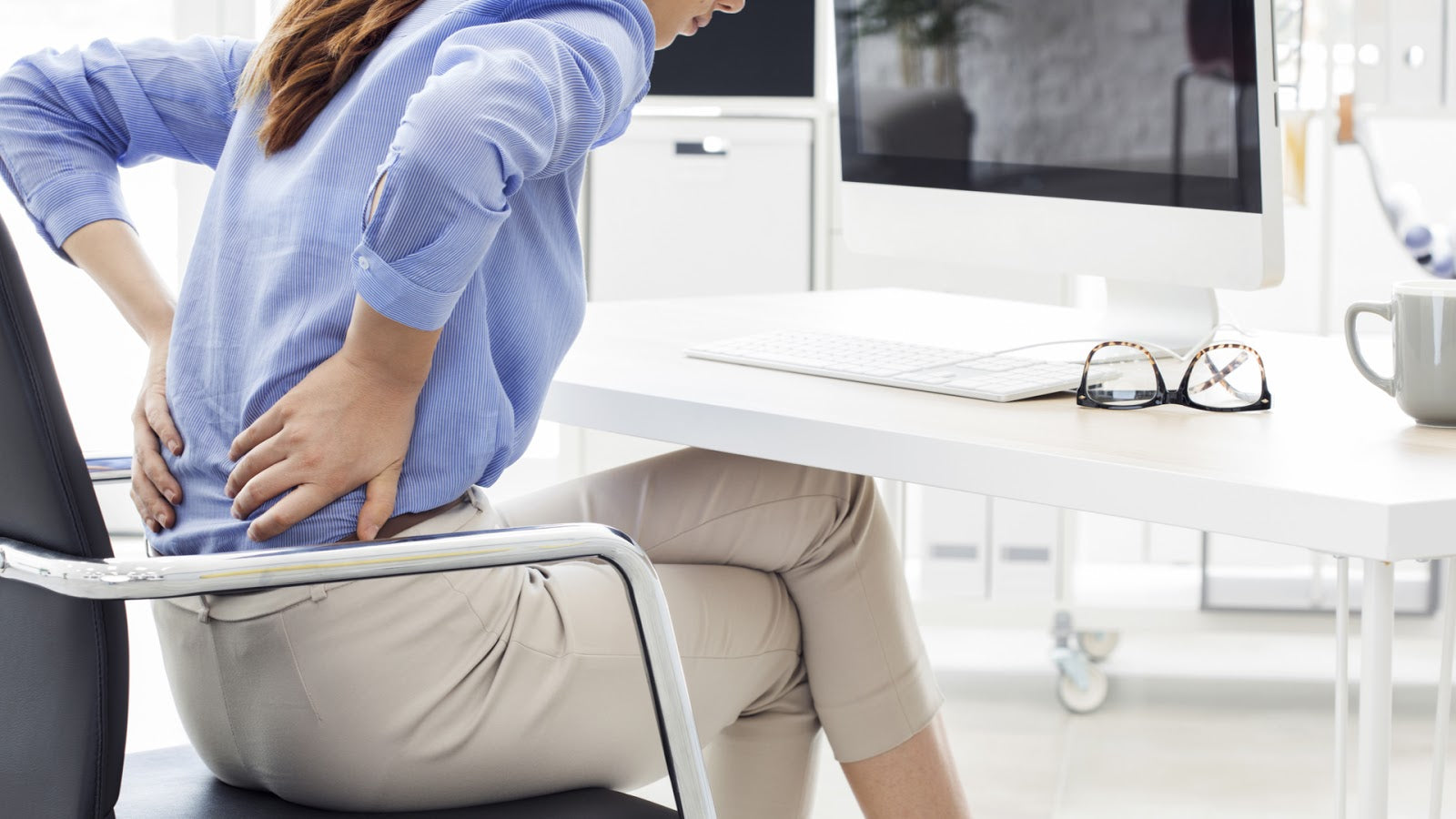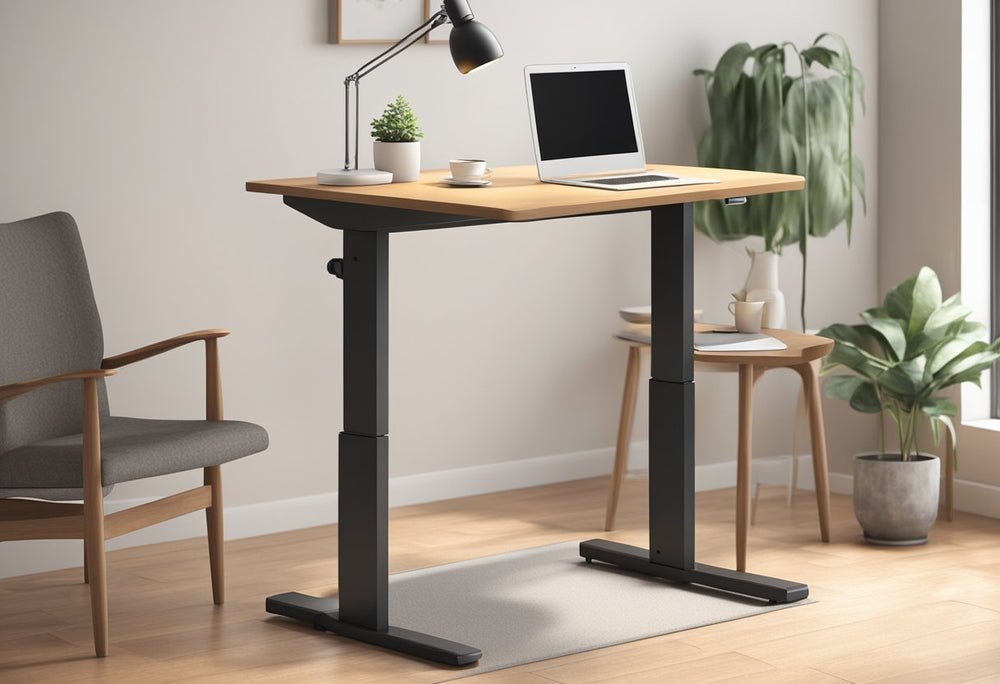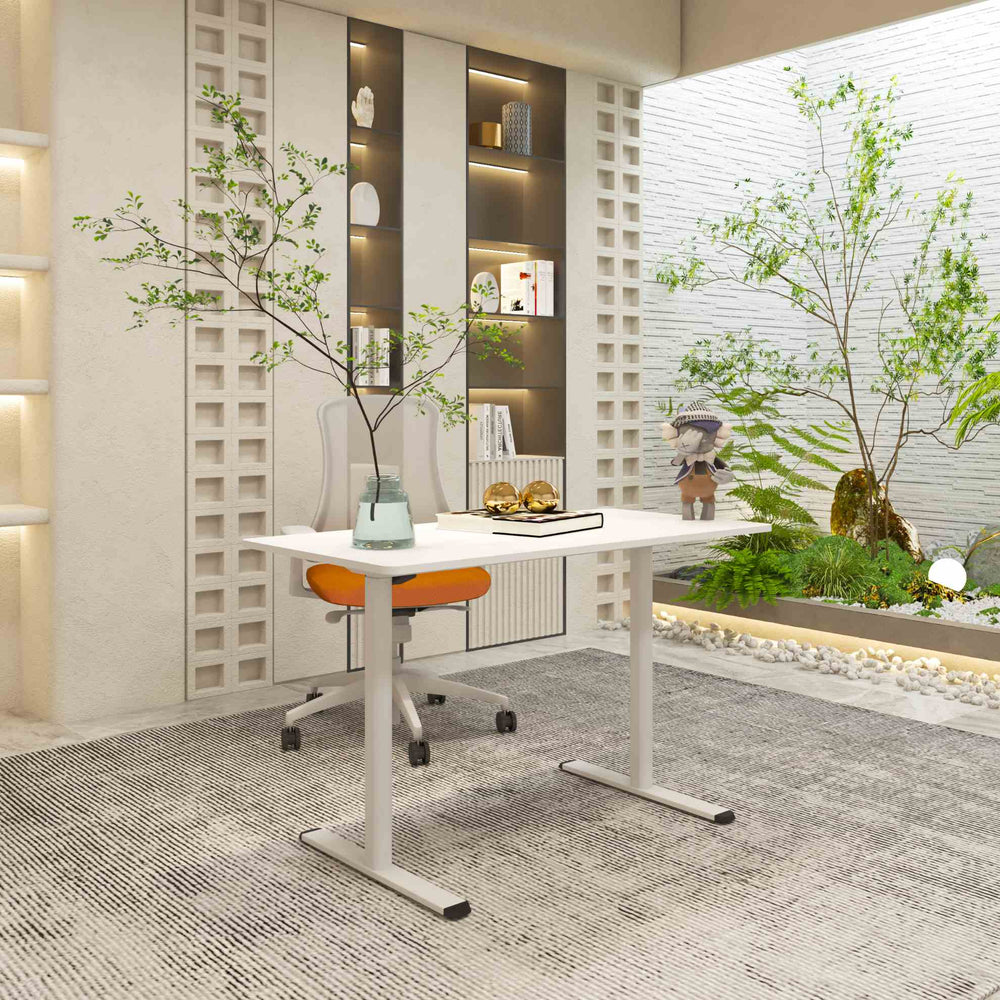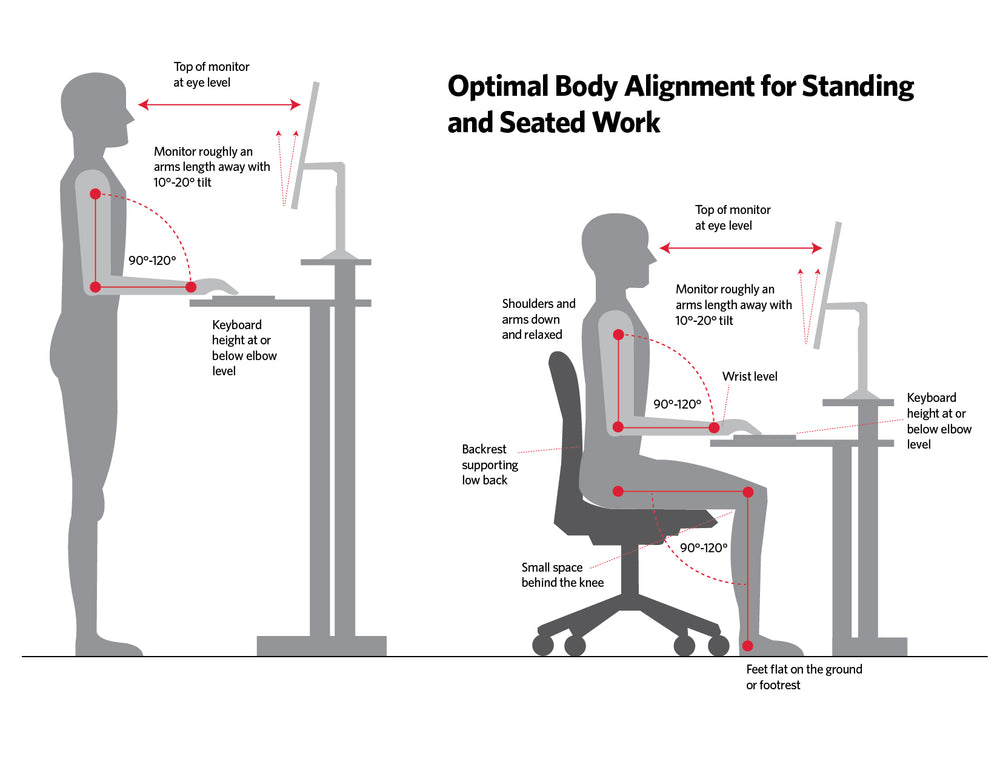Date: August 27, 2022
Complications related to bones, muscles, and the heart are common amongst office workers due to the impact of sitting for too long. These complications tend to creep up on you silently until its too late to address them proactively.
According to the WHO, about 70% of all office workers don’t carry insurance to compensate them, making them vulnerable to health complications like back pain that develops over time. In most cases, these complications are the result of a sedentary lifestyle imposed on them as part of a 9-to-5 job.
While it doesn't garner much media attention, work-related health problems account for an economic loss of 4 to 6% of GDP in developed countries. Effective preventative intervention is needed to reduce the impact of work-related health problems.
An excellent way to combat this problem is to incorporate ergonomic office equipment at work. A central piece of ergonomics is a standing desk. Throughout this piece, we will discuss standing desk health benefits and try to answer the question, "can a standing desk help with back pain?".
Table of Contents
Are Standing Desks Good For Your Back?
The short answer is: yes. When you sit for more than a few hours, it puts a lot of pressure on the pelvic and spinal region, which supports most of your body weight. This is why you feel fatigued after a long day of sitting at the office or at home.
Sitting too much affects your blood flow and increases overall morbidity as well. An analysis of thirteen separate studies found that those who sat for more than eight hours a day with no physical activity had a risk of dying similar to that posed by obesity and smoking.
(source: New York Presbyterian)
Finding a solution that incorporates activity throughout the day while still allowing you to focus on your work is crucial. But as we have discussed previously, changing habits is no small feat.
Changing Bad Habits
The best way to change bad habits is, as Mark Sisson puts it, by hitting yourself over the head with cues to get it done:
(source: Mark's Daily Apple)
The beauty of standing desks and balance boards is they automatically incorporate movement into your day without forcing you to drastically change your habits and without distracting you from your work. Just the act of lifting and lowering your desk gets you out of your state of vegetation.
Standing Desks Promote More Physical Activity
Numerous studies have looked at the viability of standing desks in an office environment. They’ve all come to a similar conclusion that standing desks promote more physical activity. You’re more likely to walk about and get a cup of coffee, go for a water break, or take a quick walk when you’re already standing at your desk.

Standing Desks Help Reduce Overall Disability
In this study of 27 randomized people with chronic lower back pain (LBP), after the use of a combination of bimonthly behavioral counseling, a sit-stand desk, wrist-worn activity monitor and cognitive behavioral therapy for LBP for 6 months, it was found that the overall disability index (ODI), a monitor for average disability, went down by 50% for the intervention group versus just 14% for the control group (those not getting intervention).
When standing upright, you put far less strain on your back. It’s fundamental physics, as your body weight is more evenly distributed across your body.
Are Standing Desks Good for Posture
While we’re on the topic of lower back pain, let's talk about posture and the impact of sitting all day on our posture.
In a report published in PubMed Central, prolonged slumping of the back resulted in muscular fatigue and chronic lower back pain, even in young adults. Sitting for long stretches of the day can cause significant strain on your eyes, back, neck, hips and butt, which may result in chronic pain.
Monitor Mounts Can Help Reduce Neck Pain

Did you know that if you do not have your monitor positioned so that you are looking forward on a flat plane and instead have a 45 degree bend in your neck, it is the equivalent of having up to 50 pounds (22 Kg) of gravitational force on your neck!?
Is your chair positioned too low? Do you have a monitor mount that allows you to position your monitors so that you have the proper ergonomic posture? The beauty of standing desks is that you can adjust your entire workstation to a level that allows you to maintain proper ergonomic positioning.
With a standing desk monitor mount that can hold single or dual monitors (or even triple monitors), you’re able to stand up and move more often and position your monitors so that you do not put too much strain on your neck and back.
The long-term ramifications of this are important: consider that with a healthier spine, you can cut down on calcium medication when you’re older. Additionally, your risk of scoliosis is reduced, a common result of a lifetime of sitting at work.
How Long Should I Stand at a Standing Desk?
The exact duration for standing continuously at a standing desk varies from person to person because each person varies in terms of diet and physical and mental health. As a result, it can be hard to recommend the exact threshold that fits everyone’s lifestyle.
However, experts recommend that on average, you should spend at least 30 minutes during a 4-hour stretch at a standing desk to notice relevant changes to your physical health. Again, that figure can vary depending on your current state of diet and physical and mental health.
Remember, your body is smart enough to let you know when it’s too much. When you initially start using a standing desk, try using it for short periods of time until your back, legs, and feet adjust to the new way in which you’re working. Several of our electric standing desks feature a timer that beeps to remind you to switch from standing to sitting (and vice versa), a nice feature to gently remind you to not stand all day.

Consider purchasing a standing desk mat to help ease the burden placed on your feet and legs. If you’re more physically fit and want to add natural movement to your day which does not distract you from your work, consider adding a standing desk balance board to your desk riser.
Final Thoughts - Does a Standing Desk Help with Back Pain?
Overall, standing desks have the potential to improve your posture and reduce overall back pain associated with sitting too much.
At Deskriser, we believe that improving your mental and physical well-being starts with looking at how your work environment is set up. This is the low-hanging fruit that you can pick right away.
If you are in charge of a corporate wellness program at your company or are looking at ways to get your employees more engaged, more productive, and generally in better shape, then start by installing more ergonomically friendly desk risers and standing desk accessories. Your staff will be happier and healthier because of it.
Of course, standing desks come in a variety of shapes and sizes, and you can’t determine a one-size-fits-all variant for your whole organization. With taller folks, you will need a standing desk for tall people. And vice versa with shorter people in need of small standing desks.
With this in mind, we developed a great tool that will help you find the perfect desk riser for anyone from 5 feet tall to 6 feet 6 inches tall. It is called the DeskFinder and you can use it here.
FAQs for Can a Standing Desk Help with Back Pain
| Q: Is looking down at your monitor bad for your back? |
|
A: If you do not have your monitor positioned so that you are looking forward on a flat plane and instead have a 45-degree bend in your neck, it is the equivalent of having up to 50 pounds (22kg) of gravitational force on your neck. Most monitors are simply placed on a desktop, forcing users to look down on them while sitting. Standing desk converters often have two work surfaces (one for your keyboard and one for your monitors) and are more ergonomic than full standing desks that replace your existing desk. The use of standing desk monitor mounts that adjust in height can help improve your posture and take off that gravitational force on your neck while at your full standing desk. |
| Q: Is it possible to stand too long at a standing desk? |
|
A: As with anything in life, yes it is possible to stand for too long. In this study involving 2 hours of consecutive standing, discomfort increased (in all body areas), reaction time and mental state deteriorated, yet creative problem-solving actually improved. If you just switched to a standing desk, start off slowly. Remember, your body is smart enough to let you know when it's too much. When you initially start using a standing desk, try using it for short periods until your back, legs, and feet adjust to the new way in which you're working. |









